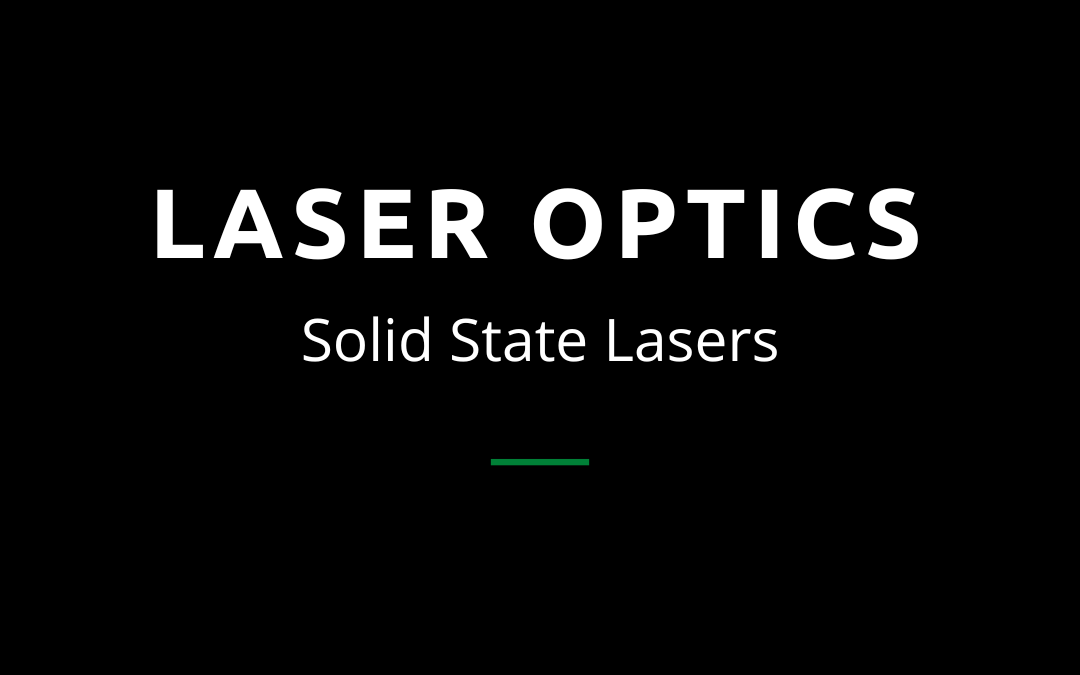As shared in part I, diode-pumped solid-state lasers (DPSSLs) are high-powered lasers that require high-precision and high-quality laser optics to perform a variety of applications, from laser spectroscopy to medical applications, where medical glass is required.
Now that you are familiar with laser diodes, solid-state lasers, and some of their components, it’s time to discuss technical applications in detail and the advantages and disadvantages of using these high-powered lasers. Read on to learn more about laser optics, laser machining, and more detail about DPSSLs.
Laser Optics: What Are Some of the DPSSL’s Technical Applications?
DPSSLs applications are common in technical scenarios where lasers must be compact and portable. Further, they must be high-powered.
When you add diode pumping, this extends the advantages of solid-state lasers by offering compatibility, high efficiency, and low thermal loads.
Because of their capabilities, DPSSLs can be used in the most precise applications. For example, in 1998, DPSSLs were designed for nonnuclear fusion experiments. Researchers at the Lawrence Livermore National Laboratory initiated the change because high-powered diode-pumped solid-state lasers are 8 percent more efficient than their non-diode-pumped counterparts.
For low-power applications, DPSSLs can measure gravitational waves (based on Einstein’s theory of general relativity but unobserved during his lifetime).
Other applications of diode-pumped solid-state lasers include:
- Medical applications
- Laser spectroscopy
- Atmospheric composition monitoring systems
- Electronic device technologies
- Ultra-high-speed photography
- Laser gyroscopes
- Nonlinear laser optics
- Laser chemistry and laser isotope separation
- Integrated and fiber optics
- Optical information processing
There are other technical applications, such as LiDAR, laser welding, and industrial lasers. Some companies have the capabilities to make the laser optic components for DPSSLs. This includes homogenizers and light pipes, laser mirrors, laser cavities, laser reflectors, and laser coating.
Some more laser optic and DPSSL technical applications are listed below.
LiDAR
LiDAR stands for light detection and ranging and is a remote sensing method. Lasers used in LiDAR are pulsed lasers that measure variable distances to the earth.
There are two types of LiDAR: topographic LiDAR uses a near-infrared laser to map land. In contrast, bathymetric LiDAR can measure the seafloor and riverbed elevations using water-penetrating green light.
Industrial Lasers
Industrial lasers are common in the EV and primary metals industries. Industrial lasers have many uses, including cleaning metal surfaces, cutting fabrics and metals, high-precision metal welding, tracking codes for industrial traceability, measuring dimensions, and changing surface roughness.
Laser Welding
In laser welding, metals or thermoplastics are welded together using a laser beam. Laser welding is beneficial compared to other welding types, as it can produce narrow and/or deep welds and has high welding speeds.
Two types of laser welding include limited welding and keyhole welding.
Laser Optics: What Are the Advantages and Disadvantages of DPSSLs?
Using diode-pumped solid-state lasers comes with many advantages, but as with all things, there are some drawbacks. Some of the advantages of DPSSLs include:
- High overall power efficiency
- Reduces problems with thermal leasing
- Ability to pump direct transitions of laser-active ions without sacrificing power
- Allows for end pumping of lasers
- Longer life than lamp diodes
- More brightness than lamp diodes, (required for some applications)
- Low-intensity noise
Some more benefits include:
- Diffraction-limited beam divergence
- Repetitive pulsed-mode operation
- High peak power
- High beam quality
- Amplitude stability
- High beam-pointing
There are two major drawbacks when it comes to diode-pumped solid-state lasers. First, pump power per watt is much higher than lamp diodes. Also, they are more prone to issues such as electrostatic discharges when compared to lamp diodes.
Sapphire ceramic China has been the leading supplier of customized precision glass, optics, ceramics, and sapphire product fabrication for over 39 years.
To learn more about laser optics, diode-pumped solid-state lasers, and our capabilities, speak to a representative today for a quote.
